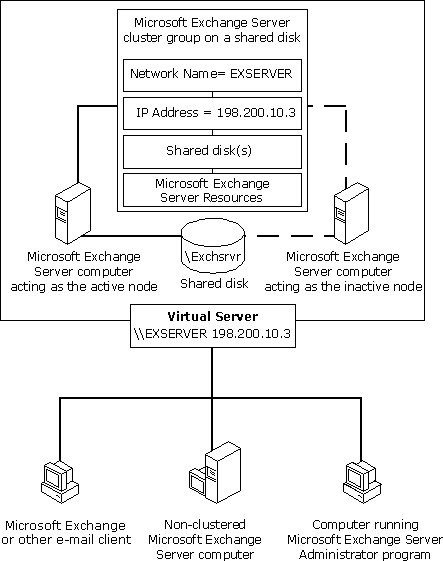
A cluster consists of two Microsoft Exchange Server computers (also called nodes) that share one or more common physical disk drives, an IP address, a network name, and Microsoft Exchange Server cluster resources.
Within a Microsoft Exchange Server cluster, only one of the nodes in the cluster can service network requests at any one time. The node that owns all clustered resources is called the active node. It owns the shared disk(s), IP address, and network name for the cluster, and it runs the Microsoft Exchange Server services. If the active node in a cluster experiences a hardware failure, Microsoft Exchange Server services fail over to the inactive node, which then becomes the active node.
As the following illustration of a Microsoft Exchange Server cluster shows, all network requests to the clustered Microsoft Exchange Server computer are directed at the virtual server defined by the cluster, not at an individual node. It is the active node that receives and processes these requests on behalf of the cluster.

Note When Microsoft Exchange Server is installed into a cluster environment, it is configured in a high-availability model, in contrast to a model that provides load balancing. As a result, Microsoft Exchange Server assumes the cluster is symmetrical. Both servers in a cluster must be identical in terms of performance and capacity so that each server can host the other's clustered resources.